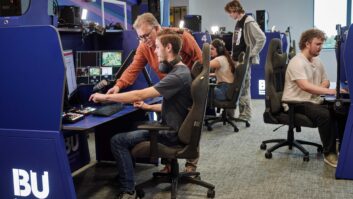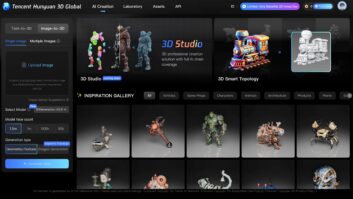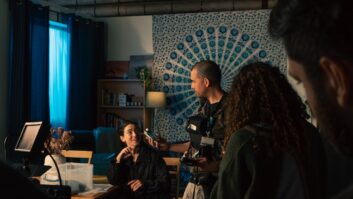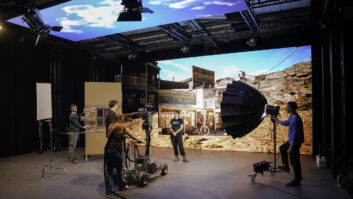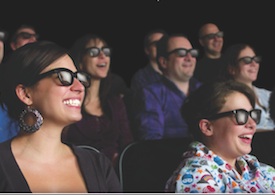
An international consortia of universities are planning to install stereo 3D production pipelines on campus sites to research techniques and produce new forms of 3D content, writes Adrian Pennington.
The initiative is being led by Germany’s Karlsruhe University of Arts and Design, part of the Zentrum für Kunst und Medientechnologie (ZKM). The faculty has separately brought together regional German institutions to form what it believes to be the world’s only stereo 3D content research and development centre.
“We develop mainly for art, but with our partners we will research formats and pilots for 3DTV,” explained project leader Ludger Pfanz.
Other members of the international consortia include the Cinema Research Centre, New South Wales, Australia; Victory University, New Zealand; Poznan Academy of Fine Arts, Poland; the Art, Design and Media school at Singapore’s Nanyang Technological University (NTU), Hong Kong’s City University; Tongji University in Shanghai; Universidad de Bellas Artes, Tenerife, Spain; Bucharest National Film and Theater University, Romania; Emily Carr University of Art and Design Vancouver; University of Strasbourg and German/French cable TV channel Souvenirs from Earth. There are currently no partners in the UK or US.
The consortia aims to research advanced stereoscopic 3D visual effects and animation filmmaking techniques, provide technical feedback to the industry and produce new forms of stereo 3D content.
“We are forming an international consortia because we think there are different conceptions of visual space among different cultures,” explained Vibeke Sorensen, Chair of the School of Art, Design and Media, NTU. “We want to apply that understanding of spatial uniqueness to the creation of global 3D narratives.”
NTU is looking to invest U$500,000-U$1 million in a new stereo facility including digital cameras and 3D rigs to augment animation, visual effects and digital media higher education courses.
It already has a site Nuke license for post production and by January 2011 will have installed 160 3D-capable PC monitors. It plans to open a 3D screening room and theatre next May.
The consortia is headed out of Karlsruhe University of Arts and Design in Karlsruhe, Baden-Württemberg, South West Germany which has formed a ‘3D Alliance’ of regional higher education institutes and invested in an array of stereoscopic equipment.
The kit list includes: 2 ARRI Alexa digital cameras, 5 Sony PWM-EX 3s, 2 Panasonic AG-3DA1 3D camcorders; a SwissRig; Panther Dolly; Piranha 3D workstation and monitor; IFX OnSet DIT monitoring; Iridas 3D workstation with monitors; Barco 2k DP 2K-20C D-Cinema Projector; and Dolby DSS 200 screen server.
The 3D Alliance includes Technische Hochschule Karlsruhe; Musikhochschule Karlsruhe; Karlshochschule; HS Technik Wirtschaft Karlsruhe; Institut für Bildmedien; Institut für Akustik; Kulturamt Stadt Karlsruhe; and the Karlsruhe Institute of Technology.
“Under our leadership all universities in the region are working on different 3D issues,” explained Pfanz. “We have complete workflows for autostereoscopy, for full HD 3D and for 2K 3D with our own 3D cinema and we are developing a new faculty for stereoscopers. To my knowledge we are the only 3D content research and development institution worldwide.”
A first international symposium on stereo content ‘3D and Beyond’ is scheduled for April next year and a 3D festival for cinema, TV and art will be held May 27-29 at ZKM.
Other initiatives at Singapore’s NTU include research into realtime stereoscopic post production which will take data from multiple video cameras and automate changes to the 3D picture including background replacements, recolouring and grading.
There is also a special focus in stereo 3D stop motion animation. “To create stop motion animation you need to understand the depth and distance between objects, sets and characters, a skill which is directly applicable to working in the digital stereo medium,” said Sorensen.
“We want to look beyond 3D as an effect and see how we can use new techniques to apply emotion, mood and atmosphere to narratives.”
